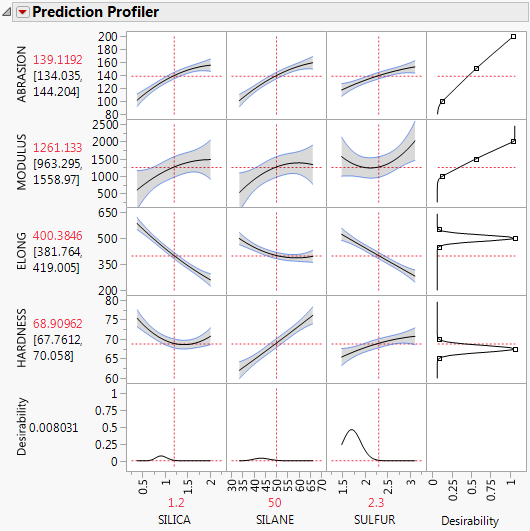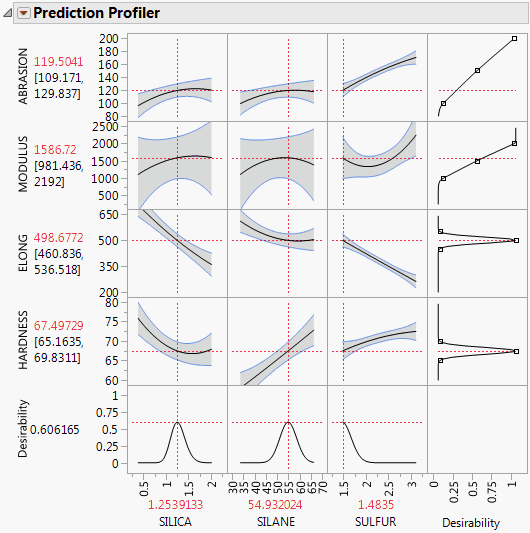A desirability index becomes especially useful when there are multiple responses. The idea was pioneered by Derringer and Suich (1980), who give the following example. Suppose there are four responses, ABRASION, MODULUS, ELONG, and HARDNESS. Three factors, SILICA, SILANE, and SULFUR, were used in a central composite design.
The data are in the Tiretread.jmp table in the sample data folder. Use the RSM For 4 responses script in the data table, which defines a model for the four responses with a full quadratic response surface. The summary tables and effect information appear for all the responses, followed by the prediction profiler shown in Figure 2.18. The desirability functions are as follows:
|
1.
|
|
2.
|
ELONG target of 500 is most desirable.
|
|
3.
|
HARDNESS target of 67.5 is most desirable.
|
Select Optimization and Desirability > Maximize Desirability from the Prediction Profiler red triangle menu to maximize desirability. The results are shown in Figure 2.19. The desirability traces at the bottom decrease everywhere except the current values of the effects, which indicates that any further adjustment could decrease the overall desirability.
Figure 2.19 Prediction Profiler after Optimization

